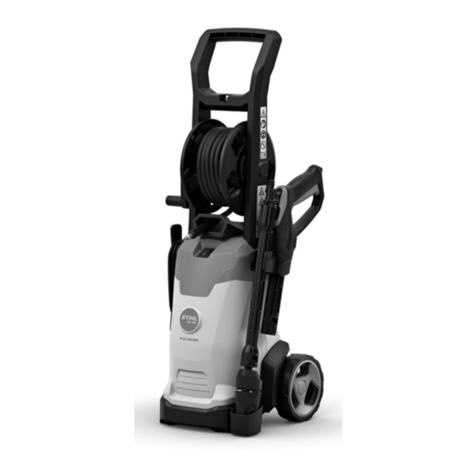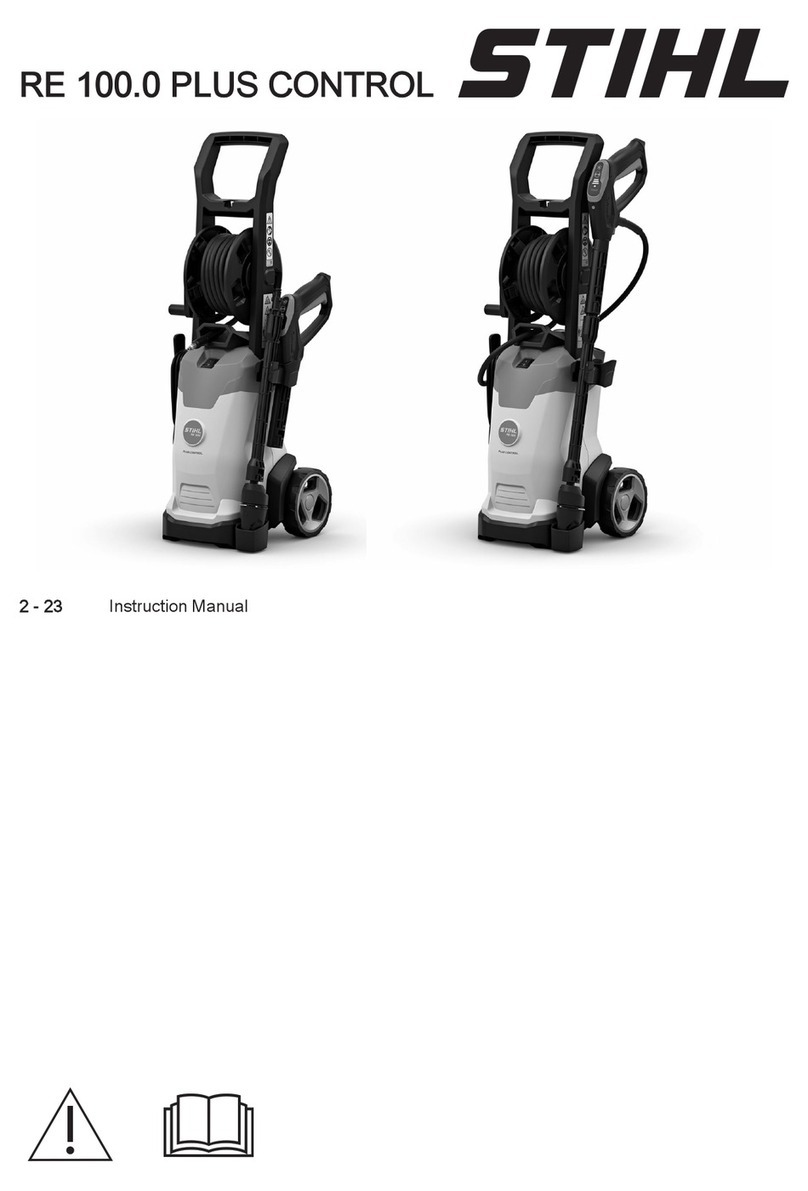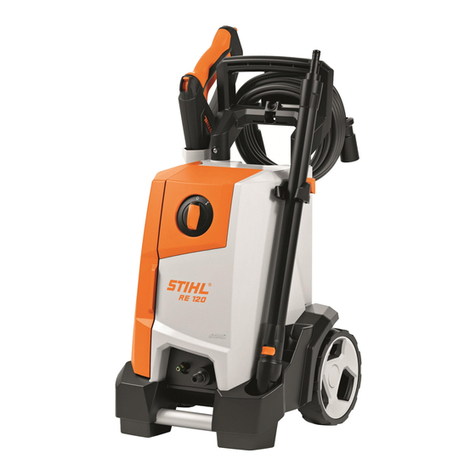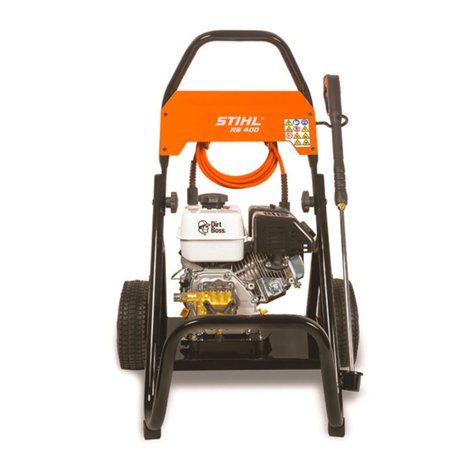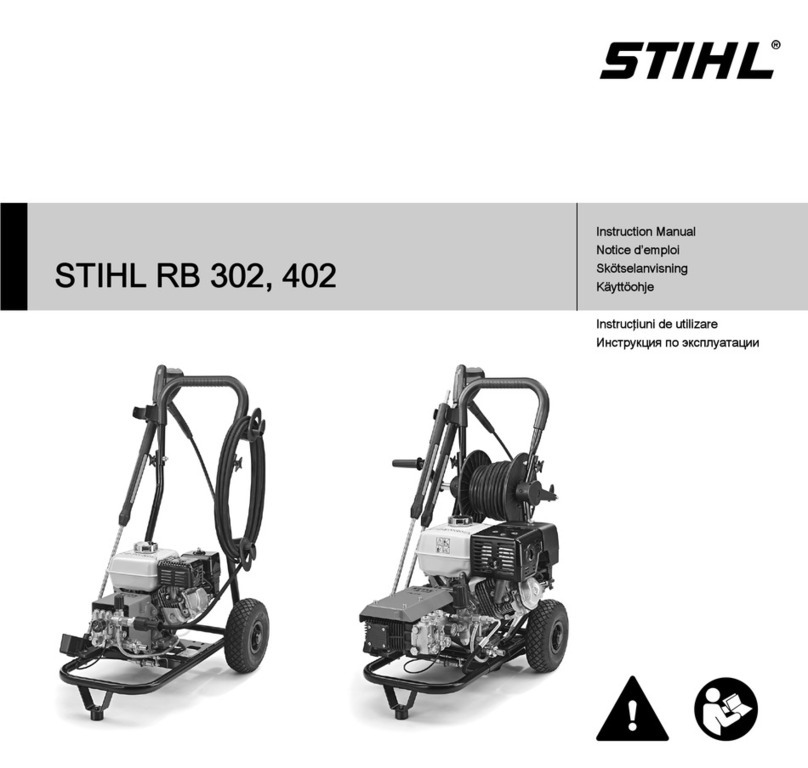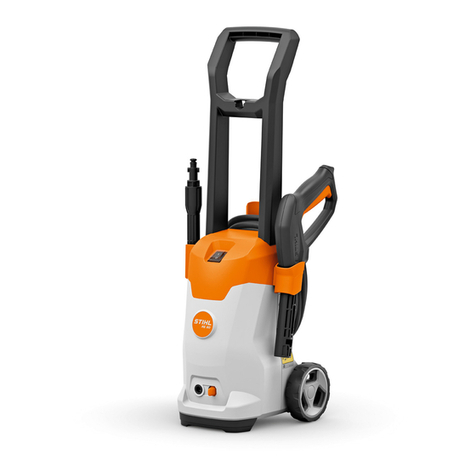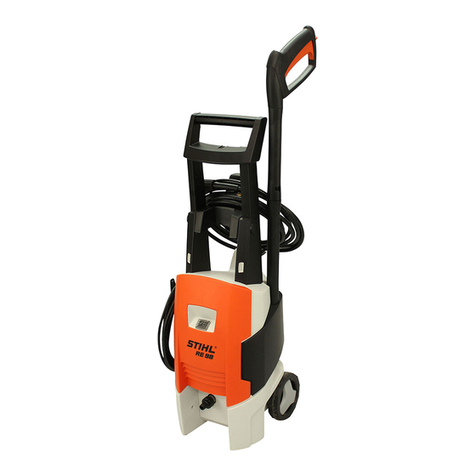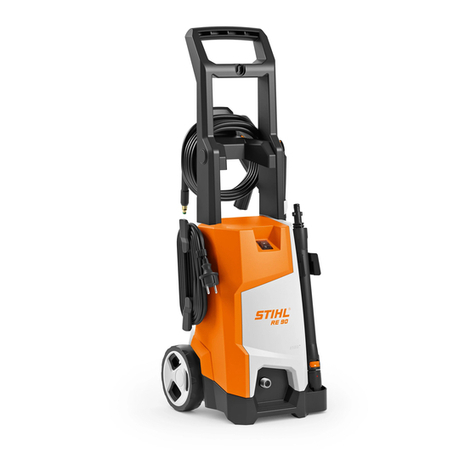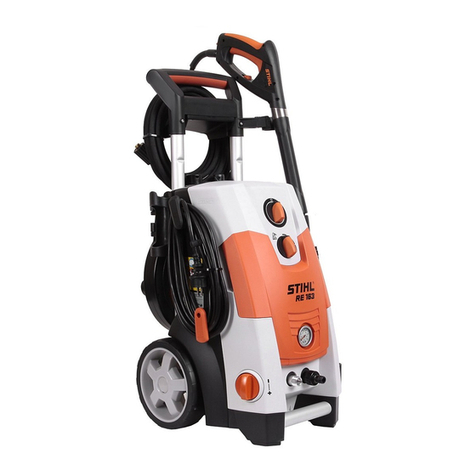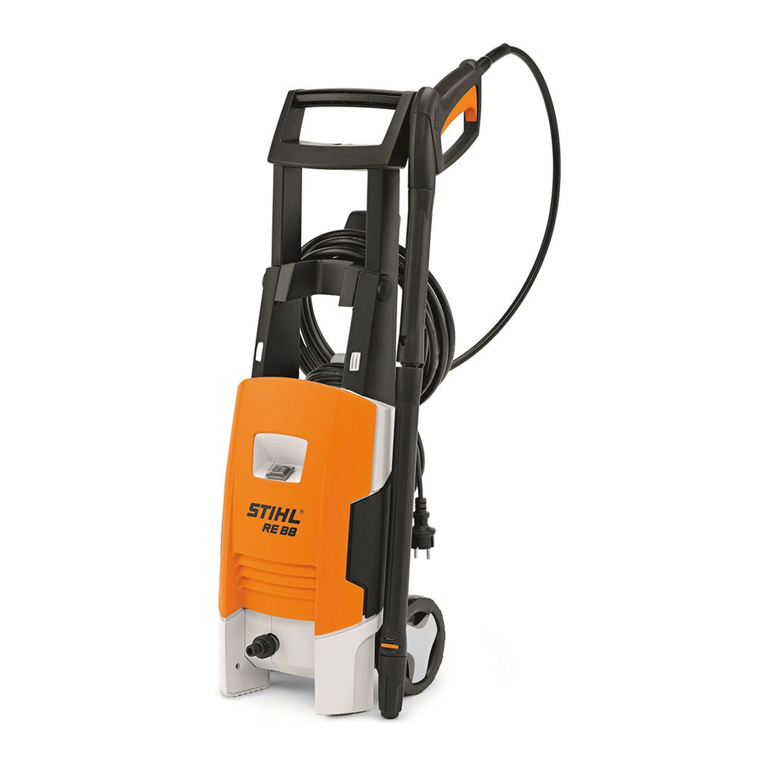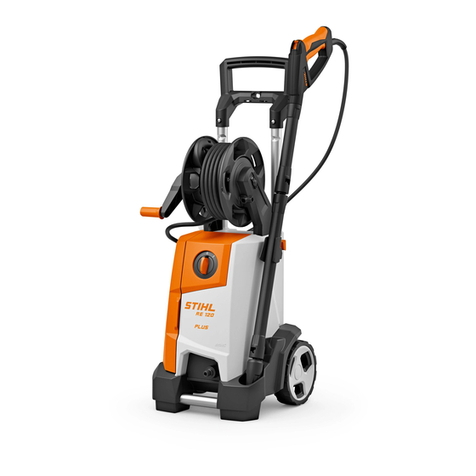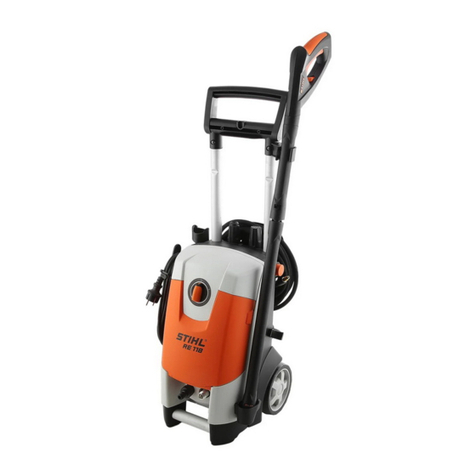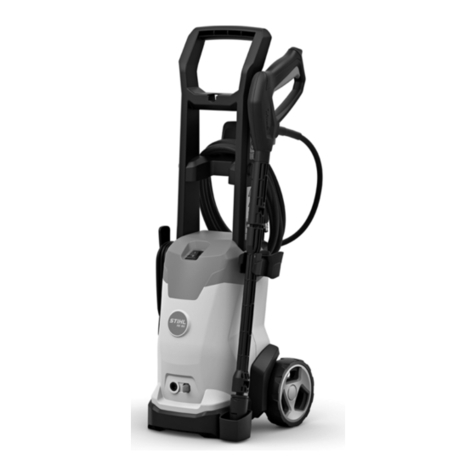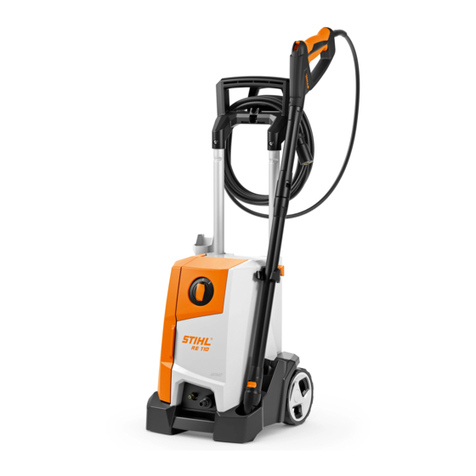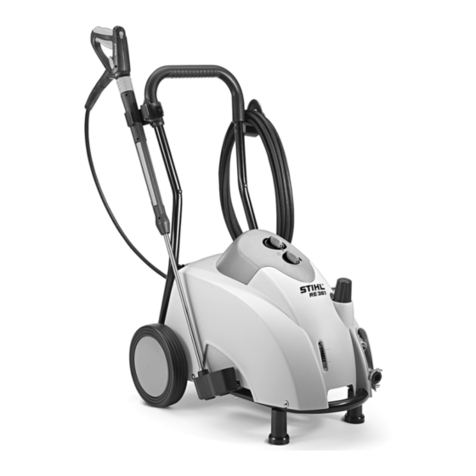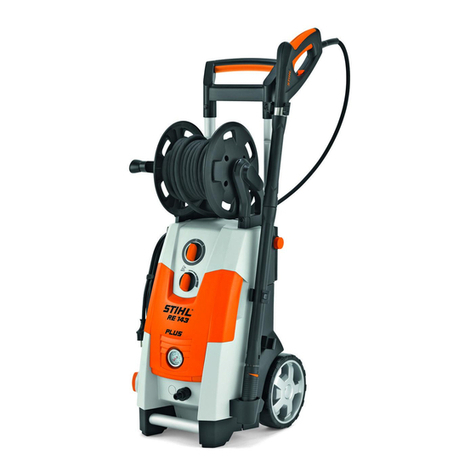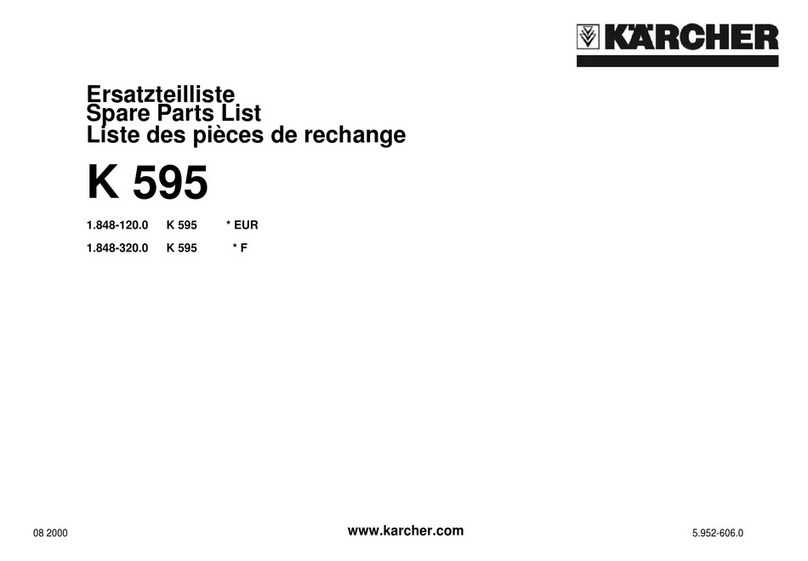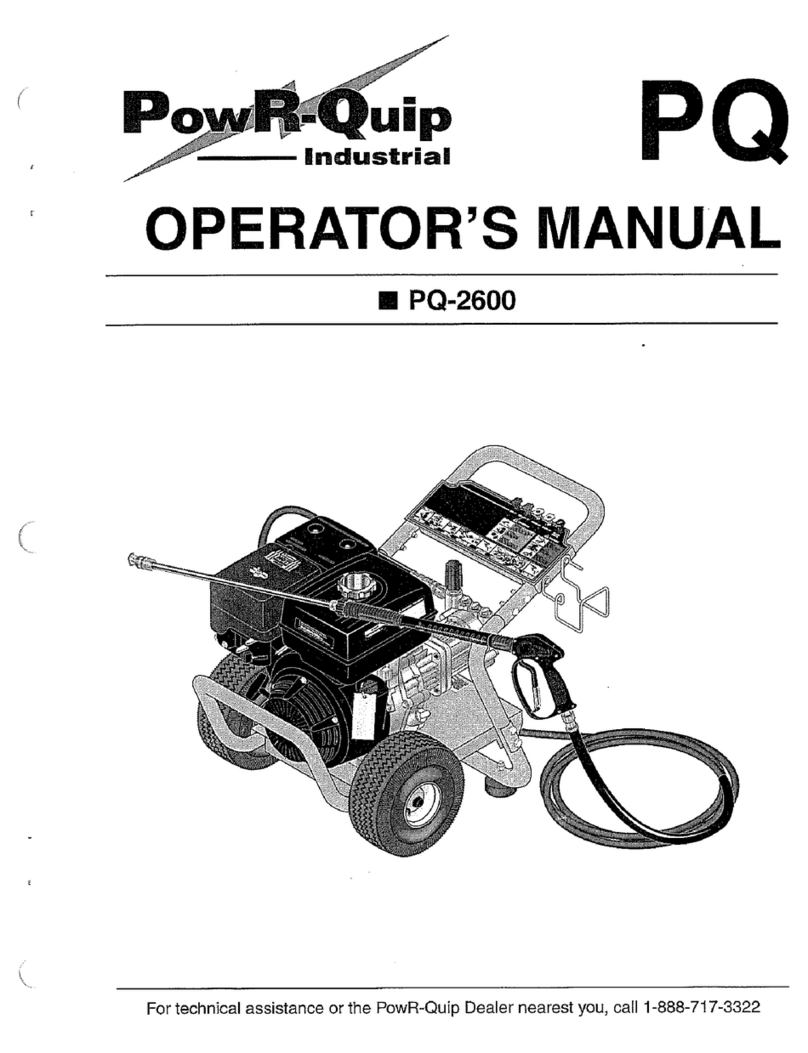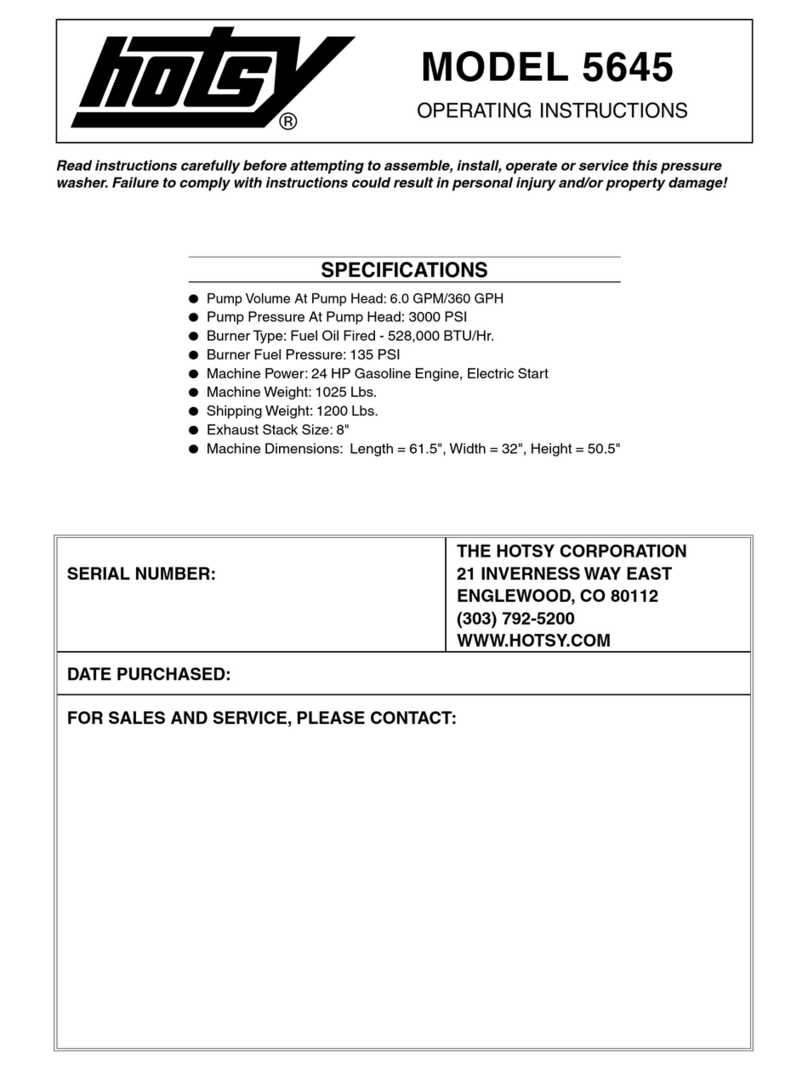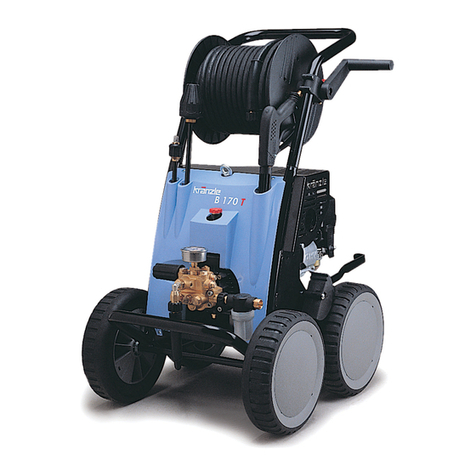RB 302, RB 402 PLUS
English
5
Do not direct the high-pressure jet
against animals.
Do not direct the high-pressure jet onto
places you cannot see.
Children, animals and bystanders must
remain at a distance.
Hazardous substances (e. g., asbestos
oroil)mustnotbeallowedtoescapeinto
the environment unchecked when
working with the machine. The
applicable environmental regulations
must be observed without fail.
Surfaces of asbestos cement must
never be cleaned with a high-pressure
jet. Hazardous, breathable asbestos
fibers may be released in addition to the
dirt. The danger is greatest when the
washed surface has dried.
Never draw in fluids containing solvents
or undiluted acids and solvents
(e. g., gasoline, heatingoil, paintthinner
or acetone). These substances damage
the materials used in the machine. The
spray is highly combustible, explosive
and poisonous.
Delicate parts made of rubber, fabric
or similar materials must not becleaned
with a pencil jet, e. g., from the rotary
nozzle. Maintain a sufficient distance
betweenthehigh-pressurehoseandthe
surface when cleaning to avoid any
damage to the surface being cleaned.
The trigger on the spray gun must move
easily and automatically return to its
starting position when released.
Alwayshold the spray attachment firmly
with both hands on the handles in order
safely to withstand the kickback force
and additional torque produced when
using spray attachments with an angled
spray lance.
Ensure that the high-pressure hose is
not damaged by being driven over,
squashed or pulled; protect it against
heat and oil.
The machine must not be covered.
Ensure that the engine is cooled
sufficiently.
Ensure proper ventilation when working
in trenches, hollows or other confined
locations – risk of serious or fatal
injury from breathing toxic fumes!
If you feel sick, if you have a headache,
vision problems (e.g., your field of vision
gets smaller), hearing problems,
dizzinessor inabilitytoconcentrate,stop
workimmediately. Suchsymptomsmay
be caused by an excessively high
concentration of exhaust emissions –
risk of accident!
No smoking when working with or near
the machine - risk of fire! The fuel tank
may give off inflammable vapors.
Safety equipment
When the safety equipment is activated,
excessive pressure is returned to the
intake side of the pump via a safety
valve. This safety feature has been set
by the manufacturer and must not be
adjusted.
After finishing work
If the machine is subjected to unusually
high loadsfor which it was not designed
(e. g., heavy impact or a fall), always
check that it is in good condition before
continuing work - refer also to the
chapter "Before starting work".
Inparticular,makecertainthatthesafety
mechanisms are working properly.
Never use the machineif it isnot in good
condition. Consult a servicing dealerif in
doubt. STIHL recommends STIHL
servicing dealers.
Before leaving the machine:
–Switch off machine
–Disconnect water intake hose
between machine and water supply
Maintenance and repairs
Themachinemustbeservicedregularly.
Do not attempt any maintenance or
repair work not described in the
InstructionManual.Allotherworkshould
be carried out by a servicing dealer.
STIHL recommends that maintenance
and repair work be carried out only by
authorized STIHL dealers. STIHL
dealers receive regular training and are
supplied with technical information.
Your power tool produces
toxic exhaust fumes as
soon as the engine is
running. These gases
may be colorless and
odorlessandmaycontain
unburnt hydrocarbons
and benzene. Never run
the engine indoors or in
poorly ventilated areas,
even if your model is
equipped with a catalytic
converter.
